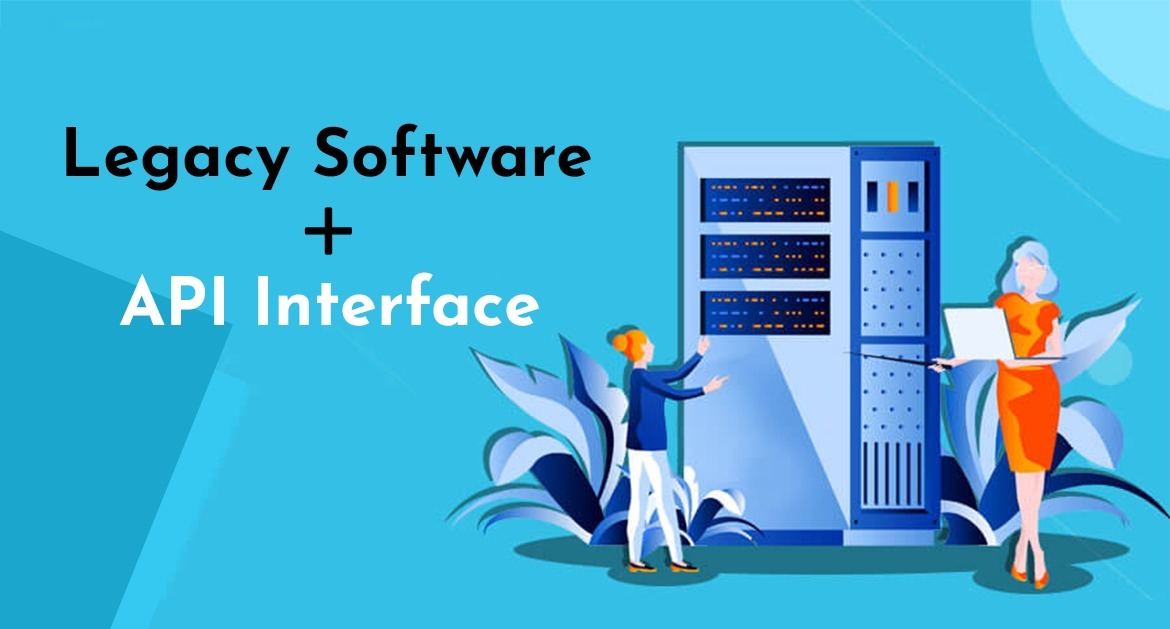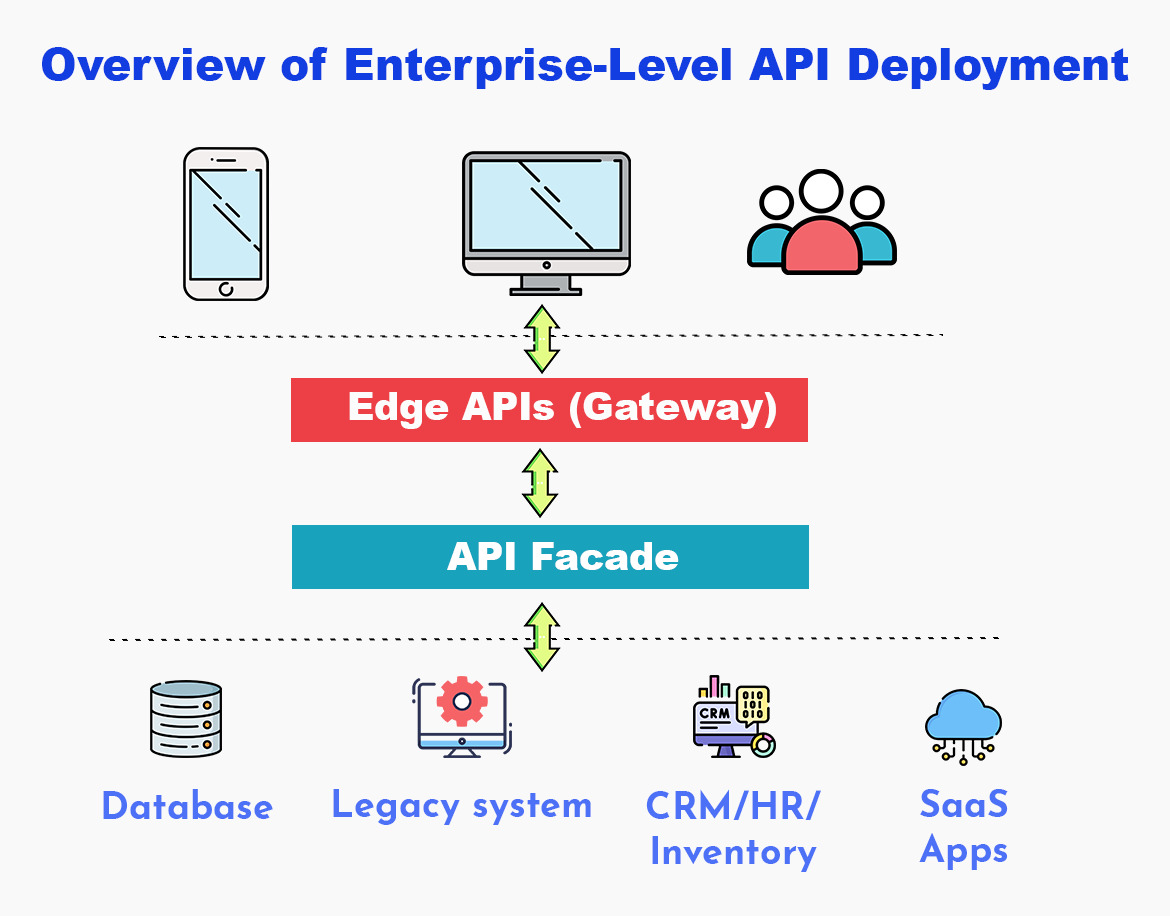
It is an environment where IT leaders are tasked with reducing spend while still integrating modern technologies. That seems like an impossible ask particularly if most enterprise applications are still running on legacy systems. If this is the difficult situation your company finds itself in, know that you are not alone. A recent survey of 1050 IT leaders (by Deloitte), on the state of their digital transformation, indicates that on average there are over 1000 different applications involved in their enterprise and a major chunk of these are running on legacy applications. Mission-critical data that resides in these legacy systems makes ripping and replacing these older systems not an option to be considered.
Mission-critical data that resides in these legacy systems makes ripping and replacing these older systems not an option.
In such a scenario, what are the options for organizations that still need to connect their legacy applications to cloud technologies and newer applications?
Organizations may have compelling reasons to retain legacy systems
Applications are the lifeblood of every organization and while migrating to new technology platforms brings added benefits, the truth is making the changeover might not be a feasible option. They just might be too difficult to replace, especially if these older systems power key business processes. There are a few compelling reasons why enterprises prefer to keep their legacy applications:
- It might be legacy software but it is working well and there is no reason to replace it.
- Most legacy applications are monoliths and therefore very complex. The cost of developing a new platform is prohibitive.
- Since these older applications are running key processes,they need to have near-constant availability. It makes it difficult to take it out of service, even for a short time. And again, building a new system with a similar availability level can take months if not years. Examples are banking systems handling customer information and transactions or computer reservation systems for airlines and other transportation.
- Retraining people on a new system would require both time and loss in productivity
However, connected customer experiences are essential to driving revenue and growth. In this scenario, there are specific challenges legacy applications have that makes integration difficult with newer applications.
Also read: What is the real cost of maintaining legacy systems?
The challenge posed by legacy application integration in the modern world
This is a real-world example one of our clients (that we will allow to be nameless) faced. Their enterprise solution had new applications that were drawing data from a number of endpoints, many of which were located on the legacy side of older applications. Since these legacy systems were not built with an API-first approach, this resulted in these older applications not being able to process the increasing number of calls from the newer more modern technology applications such as modern web apps, IoT apps, Saas apps, and other similar applications.
There was another challenge in creating a governed, secured bridge between older and newer systems. Further pressure is placed on older systems because of new compliance regulations such as HIPAA and GDPR, To explain the challenge further, the file formats of older systems are not compatible with the newer systems, and the same goes for differing transport protocols. For instance, if customer data has been stored in an older format written in PERL, a new mobile application built on a cross-platform Flutter SDK will find it difficult to pull data from the old format. This creates data silos where information cannot be shared with other branches of the business. Imagine trying to have a business discussion when both parties are talking in their own language, not understood by the other. Maybe a human translator might help make sense of the discussion for each group. Similarly, legacy data formats will require on-the-fly transformation to make them compatible with open-source modern systems.
And this is where iTech comes in, it creates the bridge between critical but not yet obsolete legacy applications and new applications on the cloud.
iTech uses API interfaces to connect legacy and modern applications seamlessly
Itech has developed an API interface that creates an abstraction layer on top of the legacy application. API is an acronym for Application Programming Interface. APIs are a software intermediary that makes it possible for two different applications built with different programming languages, to talk with each other effectively.

The above illustrations simplify the whole process of the components of an API interface. It has an API gateway that provides API management capabilities such as authorization and authentication etc. While an API facade uses RESTful APIs to access the backend functionalities
While there are one-size-fits-all API interfaces that can work for a few lower-level legacy system integrations, There are many instances where custom solutions will need to be developed.
So what exactly is this all-important APP interface and how does it work?
An API writes a collection of rules that define exactly how to access the data of another app. In our instance, it would be a legacy application. It acts like a messenger sitting between two different applications. It accepts requests and returns responses in a language that both applications can understand.
There are two ways the iTech solutions work with legacy system API integration and it depends on the nature of the client’s legacy software.
- If the older application offers an API then it can be integrated with modern applications through an enterprise automation platform. Triggers and actions can be set that synchronize with your legacy application and move data in near-real-time
- If you need to connect to a database that resides on a legacy platform, we provide a database connector. This allows you to export data. However, keep in mind that the data models of older systems have to be clearly understood so that data can be translated correctly to downstream systems. For instance, if in the legacy system customer invoice is identified as ‘A’ but in the downstream supplier invoice it is identified as ‘B’ then it needs to be correctly translated.
While reading data from older databases is an easier process, the reverse i.e. writing data from the cloud into older databases is much more difficult. iTech’s API interface while exposing the data to the cloud has also achieved read and write functionality, both from and to the cloud.
Modern systems include cloud computing, ML models, and big data analytics along with a high level of process automation. However, with legacy systems, most of these digital transformation technologies become inaccessible. You could argue that your newer applications are using these modern technologies. However, as long as your legacy applications are siloed, you will not be able to leverage the full potential of modern technologies.
Are you ready to integrate your legacy applications with your modern apps but don’t know how to do it? Contact our team of legacy application integration experts to find out how the iTech API interface is helping both smaller and larger organizations who faced a similar challenge.

Biju Narayanan
Biju is an emphatic people management leader and works by the vision that change is the door to new opportunities and innovation. As Director, he has been guiding iTech on a path of innovation for over 19 years. iTech is a full-service custom software company with a large portfolio of successful domestic and international projects including Fortune 500 organizations. Biju specializes in the healthcare, sports and logistics industries with particular focus on AI and ML. Outside of work, you may find him hitting a lethal jump smash on the badminton court and he is also a creative artist.


